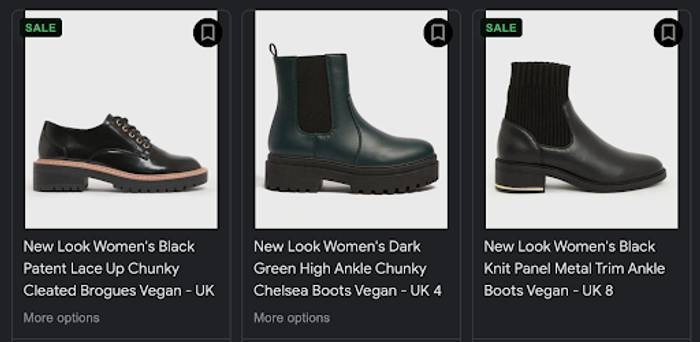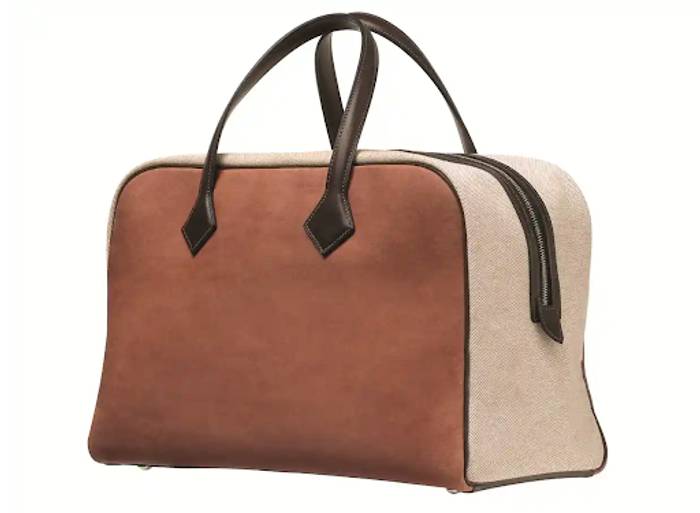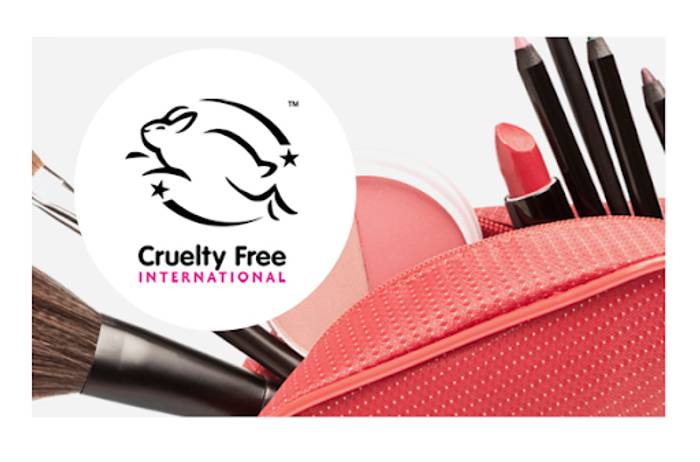Consumers in 2021 are more ethically, environmentally and health conscious than ever before — over 7.2 million British adults currently follow a vegan diet.
Sainbury’s predict that by 2025, out of all UK consumers, vegans and vegetarians will make up a quarter of the British population, whilst flexitarians — those who eat both plant-based foods and meat based — would make up just under half!
These changes in behaviour and attitudes are not limited to what we’re eating and drinking. They encompass industries outside of food and beverage. The rise of veganism in general is now reflected in what we see in stores, online, across social media and in magazines.
From hair and beauty products to clothes, shoes and accessories, highstreet and luxury brands are adapting their ranges to embrace cruelty-free vegan values.
It’s not a trend, but a movement — a movement that’s gathering increasing momentum. Sustainability, eco-friendliness and being cruelty-free are key drivers of growing ethical consumerism. Shoppers care about what they’re putting onto their bodies as much as what they’re putting into them.
What does this shift mean for brands and marketers?
Veganism in 2021: a closer look at the food and drink industry and its impact on other sectors
The rise of veganism made headlines at the start of 2021 when The Guardian reported that a record breaking 500,000 people had signed up to the Veganuary challenge - double the amount of people who signed up in January 2019.
In response to a surge in demand for affordable, accessible vegan products, by 2020 each of the UK’s major supermarkets launched their own vegan ranges, and over 1,200 new vegan-friendly products were launched, with 600 new businesses registered that year - a number which continues to rise.
That’s not all. All major fast food retailers including McDonalds, Burger King and KFC introduced vegan or plant-based additions to the menus this year, while food delivery services like Deliveroo reported the number of vegan restaurants on its app has more than doubled since 2020, with over 12,000 restaurants now offering vegan-friendly options.
Consumers aren’t just concerned about what they’re putting on their plate, but also what they’re wearing and what they’re putting on their skin. Let’s now look at how vegan food and drink trends have inspired change across the fashion and beauty industries.
The recent rise of vegan fashion as we look to 2022
Consumer attitudes towards the use of animal products in the fashion industry are changing.
A new report by The Vegan Society on the rise of vegan fashion found that…
A staggering 95% of shoppers would like to see more vegan-verified fashion options
Almost half (48%) saying they want to see it across all fashion categories.
61% believe the use of fur is cruel, while 57% feel using leather from ‘exotic’ animals is too.
37% think the use of cow leather is cruel, with more than half (54%) against the use of calf leather.
As a result, demand for cruelty-free fashion is on the rise. Vogue valued the global vegan women’s fashion market at $396.9 billion in 2019 — vegan footwear accounted for 41.3% of this — with revenue forecasted to reach $1095.6 billion by 2027.
Designers and brands are having to become more innovative when it comes to delivering stylish, functional fashion items that would typically feature animal products such as leather.
74% have stated that they would be willing to pay more for plant-based leather compared to animal leather, plants such as pineapples, mushrooms, apples and cacti are now being used to create vegan, sustainable materials used for products like coats, shoes and bags.
Take Adidas, for example. The footwear giant who have released a vegan version of their famous Stan Smith style made from Mylo, a mushroom root-based material they’re calling ‘unleather.’
The use of cruelty-free products shows no signs of slowing down. In fact, some reports even claim that the global vegan leather market is estimated to overtake the animal leather market by 2025, with a total estimated value of $90 billion.
Animal rights aren’t the only driver of vegan fashion. Many are using recycled fibres (made from non-animal based products) in the production of garments and accessories, meaning shoppers can shop for cruelty free, environmentally-conscious products.
High street vs. high fashion when it comes to vegan products
High street brands such as New Look, H&M, Reebok and Superdry have all launched vegan product ranges, opting for materials such as cactus and mushroom leathers as well as PU ‘pleather.’
The luxury sector still has a long way to go when it comes to catering for the vegan market, with silk, suede, exotic animal skins and leather still prominent on the catwalks each season.
Although the designer fashion world has been slower to adapt to this shift towards veganism, many luxury brands including Versace, Prada, Chanel, Burberry, Net-a-Porter, Michael Kors, Gucci, Jimmy Choo and Giorgio Armani have all now gone fur-free, while others are expanding their ranges to include vegan alternatives.
For example, Hermès and Chloé recently launched bags made from mushroom and apple based leathers, while Dr. Martens have released vegan versions of their cult classic boots.
So, what does the rise in vegan lifestyles mean for fashion brands?
Aligning your brand values with those of your customers is key in establishing and maintaining relationships. 64% of consumers say that sharing the same values with a brand is the primary reason they have a relationship in the first place.
Fashion brands need to connect authentically with vegan consumers. To do so, they must take meaningful action to be more ecological and ethical. They have to do more than swap out raw materials such as leather, suede, wool and fur for synthetic or plant-based alternatives.
Brands must also take a deeper look into their production processes to eliminate the use of any animal-based products along the way. There are a number of components used in the fashion world including glues, dyes and beeswax which are derived from animals. To authentically market the products as vegan, synthetic or plant-based alternatives must be embraced.
The rise of vegan beauty products: looking to 2022 and beyond
When it comes to launching vegan products, no sector is moving faster than beauty: of all the new vegan items launched in the UK last year, 82% of them belonged to the beauty category.
What’s driving this growth?
This increase in demand for cruelty-free makeup and cosmetic products stems not only from the rise of veganism and eco-conscious consumers, but also shifting consumer attitudes towards animal testing in general amongst more ethically-driven shoppers.
Demand is so strong, it’s driving real change in the industry.
In 2018, market leaders Unilever announced its support for a global ban on animal testing, while promising to stop all animal testing across their product lines which include Lynx and Dove.
They’ve also publicly backed the Humane Society International (HSI) campaign — Save Ralph — which calls for an end to cosmetic testing on animals around the world. Amassing over 100 million online views and more than three million petition signatures, the short film starring celebrities like Ricky Gervais, Zac Efron and Taika Waititi has been translated into 14 languages and has sparked legislative movement in some countries.
Other major supporters of the cause include Lush, Unilever, P&G, Avon and L’Oréal who are also working in cooperation with HSI to call on the EU to uphold its cosmetic animal testing ban.
At present, the words ‘clean’, ‘cruelty-free’ and ‘vegan’ can be found written on products and marketing across the industry, though there is still some confusion around what each term actually means and how they differ.
Clean beauty is typically associated with products made up of all natural ingredients, while cruelty-free ensures the product itself was not tested on animals in the production process, though it can contain ingredients derived from animals.
Although vegan products can be made up of natural ingredients, many contain synthetic ingredients which may have been tested on animals and so it’s important to differentiate between the three in your messaging as a brand in order to be transparent with customers.
To help consumers make more informed choices, a number of organisations have introduced vegan certifications over the years for branding and packaging. From Cruelty Free International’s leaping bunny program, to Vegan.org’s Certified Vegan certification, customers can clearly see on the packaging of any product if it aligns with what they’re looking for ethically or environmentally.
Marketing vegan fashion and beauty products: what do brands need to know?
It can be difficult to cut through the noise and connect with customers amidst the growing market for vegan fashion and beauty products. Knowing your target audiences and where they spend their time is key.
Use customer profiles
Veganism isn’t likely to be their only distinguishing factor, with people of all walks of life making the move towards an animal-product-free life. As such, creating detailed customer profiles is essential for selecting the right marketing channels and allocating budgets to ensure you maximise the impact of your outreach.
Embrace credible certification schemes
Then there’s aligning yourself with existing vegan certifications we mentioned earlier, such as the leaping bunny program. The Vegan Trademark from the Vegan Society is another well-established, trusted registration which can be found on over 57,000 products worldwide across cosmetics, clothing, food, drink and household items.
Not only will the certification position your brand in front of shoppers looking for vegan products, it also secures you access to The Vegan Society’s consumer insights service and industry reports in partnership with Attest.
When it comes to developing your digital marketing strategy, it’s important to consider a multi-faceted approach.
Make the most of social media & influencer marketing
There are multiple avenues to explore within social media as a tool to connect with shoppers looking to make more ethical, environmentally friendly purchases - it all depends where your potential customers are.
At present, #VeganCosmetics has over 12.3 million views on TikTok, while #VeganFashion has over ten million. Over on Instagram, #VeganBeauty has 2.5 million posts while #CrueltyFree has racked up a staggering 20 million!
A combined strategy of organic, influencer marketing and UGC across your key social channels is a great way for you to connect people with your brand, your messaging and your products, ultimately driving awareness and sales.
With the evolution of shopping functionalities across platforms like Facebook, Instagram and most recently, TikTok, your pages are like virtual shop windows for new and existing customers to browse.
A Sprout Social report found that 58% of consumers said they find it more engaging to connect with a brand on social media than to visit a physical store, so it’s important you keep your channels up to date with eye-catching, engaging content that resonates with your audiences.
From a paid budget point of view, you can play around with granular targeting options for promotional posts across various social channels, depending on where your audiences are - whether they’re scrolling through Pinterest looking for outfit inspiration, on TikTok down a hashtag rabbit hole or scrolling on Instagram.
Harness paid media to reach your would-be ethical consumers
There’s also PPC and paid media options worth exploring. These can help you drive sales, build awareness and re-engage with previous site visitors.
Allocating your budget across the right platforms will mean whenever people are looking for a solution to their vegan beauty or fashion problem — whether that be on Google, other search engines, YouTube or even Amazon — you’re there to provide a solution!
Use your blog to answer the questions your target consumers are asking
What are your vegan target audience members searching for on Google? What language are they using? Use your website’s blog to implement a content marketing strategy to answer these questions and get your brand in front of them.
This might mean a comprehensive guide to vegan leather alternatives, insight into how natural dyes are used in fashion manufacturing or even a trend report into the vegan beauty market, take the time to create content that will connect, inform and inspire readers.
Discover more top tips on how you can use different marketing channels together to engage with your customers at different parts of their customer journey in our blog written by our team of in-house experts.
Looking to market successfully to today’s ethical consumer?
You probably knew it already, but digital marketing is a powerful tool for connecting with the modern customer. If you need a hand developing a marketing strategy that gets you in front of those looking for vegan products, we’re here to help.
Need a hand developing your marketing strategy?
Get in touchPost by

Laura joined Team Extreme in 2017 and through the years has refined her social media skills to become our Paid Social Strategist. She works with our social clients to plan and execute content across a broad range of sectors and channels, helping clients maximise their results and ROI.
Project
Post by

Johnny bridges our content and SEO teams, creating and managing strategies that elevate clients' organic search visibility.
Project
Post by

Lucie is our lead on all paid media activity, overseeing our talented paid media team and managing the strategy and implementation of all paid search campaigns across multiple platforms. Fully Google qualified and working directly at Google prior to joining Extreme, there's not much Lucie doesn't know about PPC!
Project







